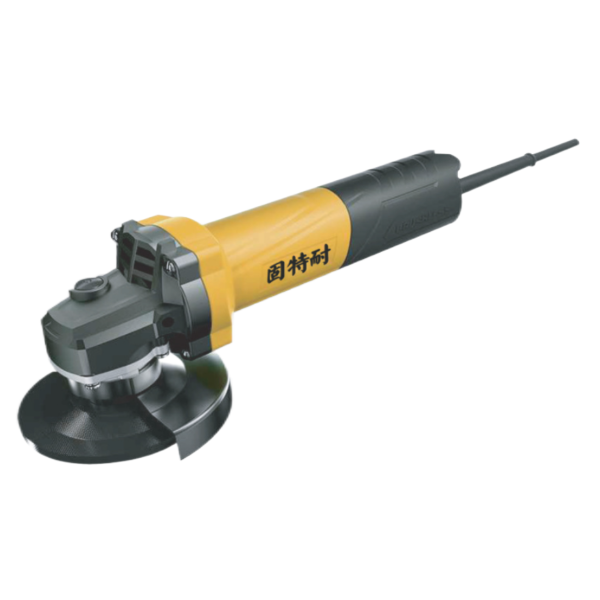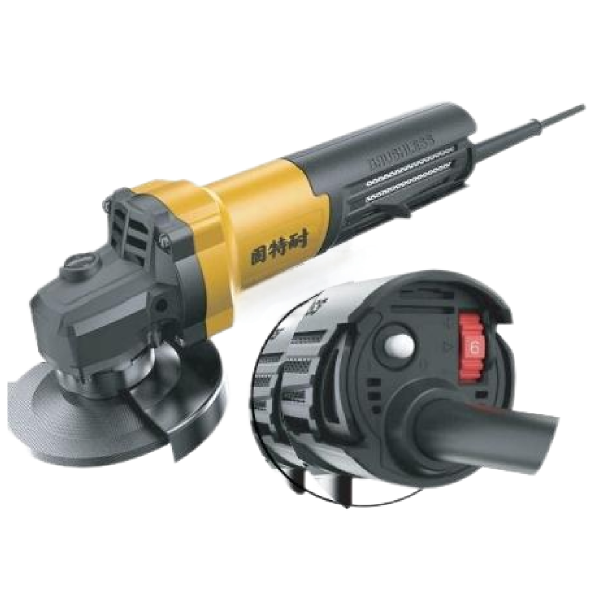Polishing Heads 101: Understanding the Different Types and Their Applications
Polishing heads are the working end of polishing tools, responsible for applying polish, removing defects, and creating a smooth, shiny finish on various surfaces. From cars and furniture to metal and stone, the right polishing head can make the difference between a mediocre result and a professional-quality shine. Polishing heads 101 is all about learning how these tools work, the different types available, and which one to choose for your specific project. This guide breaks down the most common polishing heads, their features, and their best applications, helping you master the basics of polishing heads.
What Are Polishing Heads?
Polishing heads are attachments that connect to polishing machines (like rotary buffers, dual-action polishers, or handheld tools) to interact directly with the surface being polished. They come in various materials, shapes, and sizes, each designed to work with specific polishes, surfaces, and tasks. The primary role of a polishing head is to hold and distribute polish evenly while either cutting away defects (like scratches or oxidation) or refining the surface to a smooth finish.
Polishing heads are often confused with polishing pads, but “heads” is a broader term that can include pads, brushes, and other attachments. They vary in aggressiveness—some are gentle enough for final waxing, while others are tough enough to remove deep scratches. Understanding their differences is key to choosing the right tool for the job.
Foam Polishing Heads: Versatile and Easy to Use
Foam polishing heads are the most common type, favored for their versatility and user-friendly design. Made from porous foam in different densities, they are used for everything from light finishing to moderate defect removal on surfaces like car paint, wood, and plastic.
Types of Foam Polishing Heads
- Soft foam heads: Made from low-density foam, these are gentle and ideal for final finishing, waxing, or applying sealants. They create a smooth, swirl-free shine without damaging delicate surfaces.
- Medium foam heads: Medium-density foam balances cutting power and finish quality, making them suitable for light to moderate defects like minor scratches, fading, or swirl marks.
- Hard foam heads: High-density foam is more aggressive, designed to remove deeper scratches, oxidation, or paint defects. They work well with abrasive polishes but require careful use to avoid over-cutting.
Applications of Foam Polishing Heads
Foam heads are most commonly used on car paint, where their even surface prevents holograms (shiny streaks) and ensures a consistent finish. They also work well on furniture, boats, and appliances, as they adapt to curved surfaces and are less likely to leave marks. Soft foam heads excel at applying wax or sealants, while hard foam heads handle prep work before finishing.
Benefits of Foam Polishing Heads
- Easy to control, making them great for beginners.
- Available in multiple densities to match different tasks.
- Distribute polish evenly, reducing waste and uneven results.
- Compatible with most polishes, from gentle finishing products to abrasive compounds.
Wool Polishing Heads: Aggressive Cutting for Tough Jobs
Wool polishing heads are known for their aggressive cutting power, making them essential for heavy-duty tasks. Made from natural wool (sheep’s wool) or synthetic wool (polyester fibers), they excel at removing deep scratches, heavy oxidation, and thick layers of old finishes quickly.
Types of Wool Polishing Heads
- Natural wool heads: Soft, flexible fibers that conform to surfaces well. They are slightly less aggressive than synthetic wool but may shed more fibers during use.
- Synthetic wool heads: Durable, uniform fibers that offer consistent cutting power. They are more resistant to wear and shedding, making them a popular choice for professionals.
- Blended wool heads: Combine natural and synthetic fibers to balance cutting power and flexibility, offering the best of both worlds.

Applications of Wool Polishing Heads
Wool heads are used when speed and cutting power are needed. They are ideal for restoring heavily oxidized car paint, removing deep scratches from metal surfaces, or stripping old varnish from wood furniture. They work best with heavy-duty abrasive compounds, as their fibrous texture holds large amounts of polish for fast material removal.
Benefits of Wool Polishing Heads
- Fastest cutting action for tough defects.
- Dissipate heat well, reducing the risk of surface damage during extended use.
- Durable, especially synthetic varieties, which last through multiple projects.
- Effective on hard surfaces like metal, stone, and thick paint.
Microfiber Polishing Heads: The Balanced Performer
Microfiber polishing heads are a modern option that blends the cutting power of wool with the smooth finish of foam. Made from ultra-fine synthetic fibers (microfibers), they are designed to handle both defect removal and finishing, making them a versatile choice for many applications.
Types of Microfiber Polishing Heads
- Short-pile microfiber heads: Have dense, short fibers ideal for finishing and light correction. They create a smooth, swirl-free shine on car paint, plastic, and wood.
- Long-pile microfiber heads: Longer, more open fibers offer more cutting power, suitable for moderate defects like light scratches or oxidation. They balance cutting with a smooth finish.
- Dual-layer microfiber heads: Combine a foam core with a microfiber outer layer, enhancing polish retention and reducing heat buildup.
Applications of Microfiber Polishing Heads
Microfiber heads are popular for car detailing, where they remove swirl marks and light scratches without leaving holograms. They also work well on furniture, appliances, and metal surfaces, as they adapt to curves and edges. Their ability to handle both cutting and finishing makes them ideal for projects where switching between heads is inconvenient.
Benefits of Microfiber Polishing Heads
- Versatile: Can cut defects and finish in one step, reducing workflow time.
- Gentle enough for beginners, with less risk of damage than wool.
- Efficient polish usage: Microfibers hold polish well, reducing splatter and waste.
- Durable and washable: Can be cleaned and reused multiple times, saving money over time.
Brush Polishing Heads: For Textured and Hard-to-Reach Surfaces
Brush polishing heads are designed for textured surfaces or areas where pads can’t reach, like grout lines, metal grilles, or carved wood. They feature stiff or soft bristles made from nylon, brass, or natural fibers, depending on the surface and task.
Types of Brush Polishing Heads
- Nylon brush heads: Soft to medium-stiff bristles ideal for plastic, rubber, and painted surfaces. They clean and polish without scratching, making them good for car trim or furniture details.
- Brass brush heads: Stiff, metal bristles for heavy-duty cleaning and polishing on metal surfaces like chrome, brass, or steel. They remove rust, tarnish, and corrosion.
- Natural bristle brush heads: Soft, flexible bristles for delicate surfaces like wood or antique metal. They apply polish gently without damaging finishes.
Applications of Brush Polishing Heads
Brush heads are used to polish hard-to-reach areas: nylon brushes clean car wheel wells or plastic trim, brass brushes restore metal fixtures or tools, and natural bristle brushes polish carved wood or vintage metal pieces. They are often used alongside pad-style heads to ensure all surfaces are polished evenly.
Choosing the Right Polishing Head: Key Factors
Selecting the right polishing head depends on several factors to ensure the best results:
- Surface type: Delicate surfaces (car paint, wood) need foam or microfiber heads, while hard surfaces (metal, stone) can handle wool or brass brushes.
- Defect severity: Light swirls or waxing require soft foam or short-pile microfiber; deep scratches or oxidation need wool or long-pile microfiber.
- Polisher type: Rotary polishers work well with wool or hard foam heads, while dual-action polishers pair better with microfiber or medium foam to reduce heat.
- Skill level: Beginners should start with foam or microfiber heads, as they are easier to control than wool or brushes.
Polishing heads 101 teaches us that matching the head to the task ensures efficiency, safety, and a professional finish.
Maintenance Tips for Polishing Heads
Proper care extends the life of polishing heads and ensures consistent performance:
- Clean after use: Rinse foam, microfiber, and wool heads with warm water and mild soap to remove polish residue. Brush heads can be cleaned with a stiff brush to dislodge debris.
- Avoid harsh chemicals: Use gentle cleaners to prevent damaging fibers or foam. Avoid bleach or solvents, which can break down materials.
- Dry thoroughly: Air dry all heads completely before storing to prevent mold or mildew. Lay foam and microfiber heads flat; hang brush heads to maintain bristle shape.
- Replace when worn: Foam heads should be replaced when they harden or crack. Wool or microfiber heads need replacement when fibers fray or lose their cutting power. Brushes are done when bristles bend or fall out.
FAQ
What is the difference between a polishing head and a polishing pad?
A polishing pad is a type of polishing head. “Heads” is a broader term that includes pads, brushes, and other attachments, while “pads” specifically refer to foam, wool, or microfiber flat attachments.
Which polishing head is best for a beginner?
Foam or short-pile microfiber heads are best for beginners, as they are easy to control and less likely to damage surfaces.
Can I use the same polishing head for different surfaces?
It’s not recommended. For example, a wool head used on metal may scratch car paint, and a soft foam head won’t work well on rusted metal. Use separate heads for different materials.
How often should I replace my polishing heads?
Foam heads last 5–10 uses, microfiber 10–20 uses, wool 20+ uses, and brushes until bristles wear. Replace sooner if they show signs of damage.
Do polishing heads work with all polishers?
Most heads are designed for specific polishers (rotary, dual-action, handheld). Check the head’s compatibility with your tool’s size and speed settings before use.
Table of Contents
- Polishing Heads 101: Understanding the Different Types and Their Applications
- What Are Polishing Heads?
- Foam Polishing Heads: Versatile and Easy to Use
- Wool Polishing Heads: Aggressive Cutting for Tough Jobs
- Microfiber Polishing Heads: The Balanced Performer
- Brush Polishing Heads: For Textured and Hard-to-Reach Surfaces
- Choosing the Right Polishing Head: Key Factors
- Maintenance Tips for Polishing Heads
- FAQ


